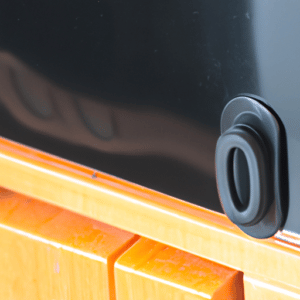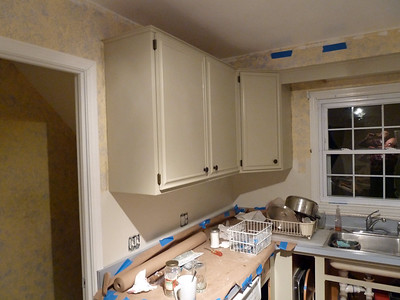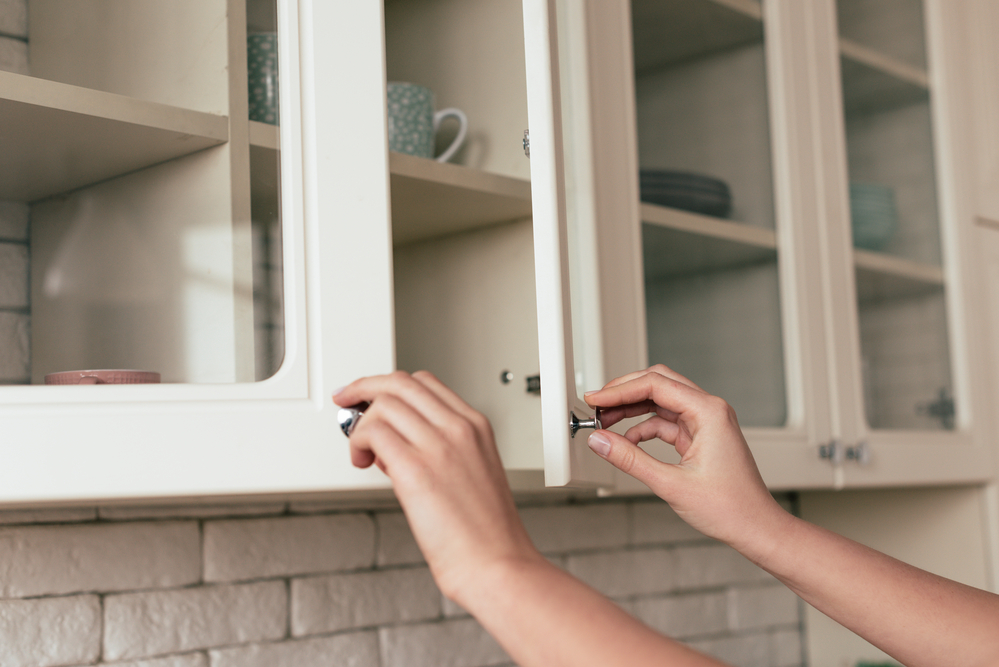Kitchen doors are usually durable and long-lasting. However, they may malfunction over time. You will also find many common problems, such as loose hinge screws, misaligned doors, and door banging.
This guide focuses on various approaches how to fix a kitchen cupboard door and the typically associated difficulties you may encounter.
Step-by-Step Guide to Fixing a Kitchen Cupboard Door
Method 1: Replacing Broken Latches
Some kitchen cupboards have latches that the doors slot into to form a soft locking mechanism. Over time, these latches can become damaged and worn out.
If you notice that your doors are not closing tightly, you may need to replace the latches. Remove the old ones simply by screwing the two screws and holding them in place with a screwdriver. You can then install new latches using the existing screw hole.
By using the same screw hole, you can ensure that the latches are aligned properly and will catch the door when closed.
Method 2: Re-Aligning Door Hinges
Many cabinet hinges are flexible and can have their position altered. There are usually two parts. The first is the metal base of the hinge that sits on the side of the unit. To this, the adjusting hinge is usually screwed.
The hinge screw holes may be flexible and have room for movement. As a result, if they are not initially tightened properly, the doors can become unaligned over time.
To remedy this, the best solution is to first loosen the screws. You should be able to adjust the hinge on the door freely and position it so that it is aligned properly. Once you have found the correct alignment, re-tighten the screws so that the hinge sections cannot move.
Method 3: Adding Door Bumpers

Banging doors are hugely irritating! The noise is piercing. Also, repeated banging each time you close your cabinet doors will lead to damage.
There is an easy fix you can make that is also cheap! It simply involves installing door bumpers in the corners of your cabinets.
Door dumpers are small circular pieces of rubber or spongy material that can absorb the impact of the cabinet door closing: this prevents damage and reduces the noise.
You can buy packs of door bumpers from DIY stores for next to nothing. They usually come in packs of 10 or 20, so one pack should be enough for your cabinets.
These door bumpers also usually have adhesive or a sticky backing, so no wood glue is required. Simply tick a bumper in the top and bottom corner of each door on the far side – the side furthest away from the hinges: this side has contact with the cabinet unit when closed. Position the bumpers carefully so that they will be aligned with the edge of the cabinet.
Method 4: Tightening Loose Handles
The handles will eventually come loose when you consistently open and close your kitchen doors. Regardless of the quality of the bolt or the handles, the connection won’t stay tight forever.
Moreover, if you have heavy-handed children or people in your household, the repeated banging can unscrew the handles. It could loosen the handles in their holes. This is incredibly annoying, and it can lead to the handles snapping off completely.
Luckily, it is a simple thing to rectify. Most cabinet door handles are simply attached to the doors with screws that fit through the door. The handle sits on the front of the cabinet door. Plus, the screw pushes through to secure it from the rear.
You have to find a suitable screwdriver and tighten the screws. Place as much pressure as possible to ensure the screw is flush and the connection is tight.
Method 5: Touching-up Scratches
Over time, you may find that your doors pick up scratches and nicks. This happens even if you are incredibly careful as a result of simple wear and tear.
You can generally fix small scratches and nicks to the veneer or wood finish of the doors. From DIY stores, you can purchase things like filler pencils and touch-up markers. These are simple tools containing liquids inside that will look similar to a wood finish, for example.
If you have scratches, you can use wood filler to fill them in. Be careful, and make sure you wipe any excess wood filler from the surface afterwards. Also, be aware that wood usually absorbs much of the filler and thus can turn it a darker colour. As a result, it is advisable to choose a filler that has a lighter colour than your doors.
Method 6: Fitting New Hinges
Eventually, you may find that your existing hinges are worn out and cannot be fixed. In this instance, they need to be replaced.
If you have the money, buying a new set of hinges for your cabinet door shouldn’t be too expensive. The most difficult part may be finding a supplier. Hopefully, you still have the company’s contact that supplied your kitchen, so they can usually provide new sets of hinges for you.
If not, you would have to find the manufacturer of the actual units. If you cannot find exact replacements, you will have to use similar hinges that can fit your doors’ configuration.
Once you have found your suitable hinges, attaching them to the doors and installing them using the existing screw threads is just an easy process.
Eventually, you may find that your existing hinges are worn out and cannot be fixed. In this instance, they need to be replaced.
If you have the money, buying a new set of hinges for your cabinet door shouldn’t be too expensive. The most difficult part may be finding a supplier. Hopefully, you still have the company’s contact that supplied your kitchen, so they can usually provide new sets of hinges for you.
If not, you would have to find the manufacturer of the actual units. If you cannot find exact replacements, you will have to use similar hinges that can fit your doors’ configuration.
Once you have found your suitable hinges, attaching them to the doors and installing them using the existing screw threads is just an easy process. Then, you can have a kettle, plates, and other cooking equipment well organised in your kitchen cupboards.
Kitchen Cupboard Door FAQs
Can You Easily Get Replacement Hinges for Your Cabinet Doors?
This depends on the manufacturer and where you bought them from. The best place to look is the original place you bought them. Failing that, try and find the manufacturer’s website – they should sell accessories like hinges and handles.

Can You Sand Your Cabinet Doors?
Yes. Sanding can help remove nicks and imperfections, but it will also damage the finish of the doors. As a result, you would need to sand the entire surface and repaint the doors afterwards or restain them.
Is It Cheaper to Simply Replace Your Doors Than Try to Fix Them?
Generally no. Most of the above tips are inexpensive and only require basic tools. If you can fix a cabinet door, it will prove to be far cheaper.
Start Fixing Your Kitchen Cupboard Doors
We hope you have benefited from this article on how to fix a kitchen cupboard door. You don’t have to buy completely new doors or even replace your cabinets.
Instead, there are many simple ways in which you can fix problems with your existing cabinet doors. As you can see, most of them are simple too and don’t require great DIY knowledge!

